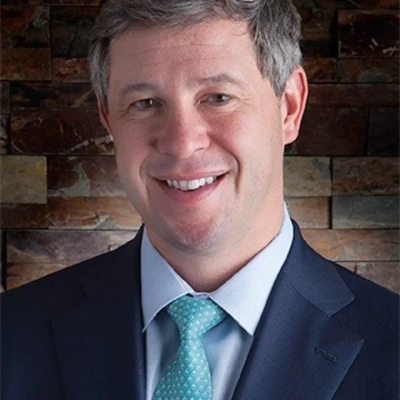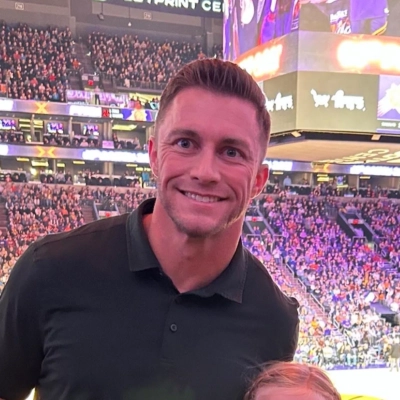15 Creative Approaches to Address Burnout in High-Pressure Workplace Environments
Burnout in high-pressure workplaces can significantly impact both employee wellbeing and organizational performance, but implementing creative solutions can make a substantial difference. This article presents 15 innovative approaches to address workplace burnout, backed by insights from experts who have successfully implemented these strategies in demanding professional environments. From strategic rest periods to flexible scheduling options, these practical techniques offer tangible ways to transform workplace culture while maintaining productivity.
Book Strategic Afternoon Rest for Performance Boost
The afternoon nap - my key to good leadership strategy.
Technique: Book a 30-minute "meeting" with myself. For 25 minutes, I close my eyes, sometimes I sleep, sometimes I just stare at the ceiling. When the alarm goes off, grab a cold glass of lemon water, splash my face, and get back to work.
If I don't fall asleep, that's fine. The point isn't the nap, it's the data break. Our brains process roughly 11 million bits of information per second, and most of it is emotional and sensory noise. In high-pressure environments, that constant input fries the system. A short rest interrupts the "frying" and lets the default mode network kick in (a network of creativity and reflection brain regions that switch on when you're daydreaming, resting, or mind wandering) and bam, insight, innovation and creativity come alive..
When I pitch the afternoon nap or "stare at the ceiling" exercise to my leaders, they look at me funny. So I tweaked it and called it your performance reboot aka rest periods that sharpen focus, improve accuracy, and regulate emotion. Once they experienced it, the results were impossible to ignore. People came back sharper, calmer, and more creative.

No-Edit Fridays Give Content Teams Space
One creative fix we used was implementing "no-edit Fridays" for our content team. On those days, no one was allowed to revise, optimize, or stress over feedback—they could write, brainstorm, or even step away to read and recharge. It gave everyone a break from the pressure of constant output and correction.
As the founder, I didn't need to "convince" leadership, but I still monitored its impact. We saw fewer mistakes, better Monday output, and overall higher morale. If you want buy-in, tie any burnout solution to performance—because in the end, rest isn't a luxury, it's part of getting good work done.
Self-Scheduled Breaks Empower Event Crews
In event work, schedules change constantly. One week might be full of large setups, the next packed with back-to-back tear-downs. To help the team handle that pace, we started letting everyone decide when to take their breaks. Some people preferred short pauses throughout the day, while others worked best with one longer break after a busy stretch. Giving them control made a noticeable difference in how they managed their energy.
This approach came from listening to the crew and paying attention to how they were handling long days. When someone looked exhausted, another person would step in to help. It became a natural system of support, and everyone looked out for each other. Trust grew quickly once people saw that their choices were respected.
Leadership was on board once they saw how much smoother things ran. Allowing the team to take breaks on their own terms didn't slow us down. It actually made people more alert and positive. In a high-pressure environment like ours, that kind of flexibility keeps morale strong and helps prevent burnout before it starts.

Integrate Microlearning with Wellness for Results
A highly effective approach to addressing burnout in high-pressure environments has been the integration of microlearning with wellness-focused interventions. Research from the World Health Organization indicates that workplace burnout affects over 20% of employees globally, reducing productivity and engagement significantly. By implementing short, targeted learning modules that combine skill-building with stress management techniques—such as guided mindfulness exercises or brief resilience training—teams can maintain high performance while actively managing mental load. Leadership adoption often hinges on demonstrating measurable outcomes: metrics like reduced absenteeism, increased engagement scores, and faster skill acquisition create a compelling business case, showing that supporting mental well-being directly correlates with organizational efficiency and retention.
Flex Weeks Transform Culture Beyond Wellness
Burnout doesn't always show up as exhaustion. Sometimes it looks like disengagement, sharp drops in creativity, or high-performers quietly resigning without leaving the company. In a high-pressure environment, where expectations are sky-high and downtime is minimal, addressing burnout takes more than a wellness webinar. It takes culture change—and a little creativity.
One of the most effective and creative strategies I implemented was introducing "Flex Weeks"—structured time for deep work, cross-skilling, or rest, with no meetings, no emails, and no performance pressure. Unlike a vacation (which people often feel guilty taking), Flex Weeks were built into our operational calendar and treated as strategic investments in team wellbeing and innovation.
To convince leadership, I framed the problem in terms they understood: retention risk, declining innovation, and rising absenteeism. I presented Flex Weeks not as a "break," but as a business continuity tool to reduce turnover, spark fresh ideas, and give high-performers the recharge they need to keep delivering long term.
We piloted this concept in Q3 during our post-launch slump—a time historically marked by low morale and increased sick leave. The Flex Week allowed employees to work on passion projects, upskill in a different department, or fully unplug (their choice). No deliverables were required. No Slack messages were expected.
The impact was immediate. Teams returned with new ideas, faster decision-making, and noticeably higher energy. One team member used the time to learn Power BI and later automated three major weekly reports. Another created an onboarding playbook that cut our new hire ramp-up time by 30%.
By designing "rest" as part of performance—not the opposite of it—we signal to our teams that wellbeing isn't a bonus perk. It's embedded in how we work.
You can't spreadsheet your way out of burnout. You have to design cultures that recognize the human cost of high achievement—and proactively protect the people behind the performance. Flex Weeks weren't just a creative solution—they were a shift in philosophy: from squeezing more out of people to creating space for people to bring more of themselves.
Leadership didn't just buy in—they now advocate it to other departments.
Micro-Mindfulness Breaks Enhance Work Performance
One of the most creative approaches I used to address burnout in a high-pressure environment was implementing "micro-mindfulness breaks" powered by visual reminders. At AIScreen, I integrated short, 2-minute wellness prompts directly into our digital signage system—gentle nudges to stretch, hydrate, or simply pause for a deep breath. Instead of treating wellness as a separate initiative, I made it part of the daily workflow, seamlessly woven into the workspace rhythm.
To convince leadership, I presented it not as a wellness perk but as a performance optimization strategy. I shared data linking cognitive recovery to productivity and illustrated how short pauses could improve focus and reduce errors. Within weeks of rollout, I saw measurable improvements in engagement and team morale.
The experience proved that combating burnout doesn't always require grand programs—sometimes, it's about designing intentional moments of stillness in a culture that glorifies constant motion.

Silent Mornings Create Present-Focused Team Members
I established a time period which I named "silent mornings" where employees received two hours of uninterrupted time to work on their own projects or simply relax without any work obligations. The initiative focused on helping people stay present in the moment rather than generating productivity. People who receive time to reconnect with themselves will experience positive effects in all aspects of their lives.
I requested one-week participation from leadership members instead of presenting slides to introduce the concept. The team members started to experience the change after only three days of implementation. The team members experienced reduced tension while gaining better clarity and producing innovative solutions. The evidence demonstrates its effectiveness.
No-Meeting Fridays Boost Deep Work
When burnout started showing up in small ways, short tempers, slower ideas, we didn't add another 'wellness day.' Instead, I introduced no-meeting Fridays so people could work deeply or rest guilt-free. Productivity actually went up, and morale followed. Convincing leadership was simple: I framed it as a performance experiment, not a perk. Once they saw the results, it became policy.

Mandatory Deep Work Bans Afternoon Distractions
Hi,
As a CEO of Get Me Links, my creative solution to burnout was simple but controversial: I made "deep work" mandatory and banned shallow tasks after 3 p.m. Our industry thrives on constant client demands and endless outreach cycles, but I noticed diminishing creativity and rising errors. So, I restructured our workflow to give my team fewer meetings and longer focus blocks. The impact mirrored what we achieved with a luxury home fashion eCommerce client, where refining link-building focus boosted organic traffic by 162% and revenue by 178% in six months. The principle was the same: reduce noise, increase quality.
Convincing leadership wasn't easy until I presented data showing that burnout wasn't killing productivity it was killing precision. By trading "hustle culture" for structured calm, our output didn't just improve, it compounded. The team's efficiency rose, our client satisfaction scores followed, and ironically, the less we chased every task, the more meaningful results we achieved. Sometimes, the real growth hack is knowing when to stop.
Rotating Case Teams Reduce Legal Monotony
One effective strategy I implemented to combat burnout was creating a rotating case team system. Instead of assigning attorneys and staff to one long, demanding case for months, we began rotating roles after key milestones. This allowed fresh perspectives to enter complex cases while giving others time to recharge and refocus.
The change addressed two common causes of burnout in law, monotony and emotional fatigue. By encouraging team fluidity, our attorneys felt supported rather than trapped in endless litigation cycles. It also improved collaboration and mentorship between senior and junior team members.
Convincing leadership came down to data. I presented metrics on declining productivity and increased sick days during prolonged case assignments. Once leadership saw that rotation improved both morale and case performance, adoption was easy. The system now serves as a foundation for sustaining long-term engagement.

Swap Weeks Break Routine Without Sacrificing
What really helped reduce burnout on our team was introducing what we call "swap weeks." Instead of assigning the same technicians to the same routes and clients month after month, we rotate territories occasionally so everyone gets a change of scenery and schedule. It breaks routine fatigue and gives team members a chance to reset without taking time off.
To get leadership on board, I demonstrated how small route changes could prevent disengagement while maintaining high productivity. We tracked feedback and noticed better morale and more collaboration—techs started sharing ideas after working in new areas. The lesson was simple: sometimes fighting burnout isn't about doing less work, it's about making the work feel fresh again.

Mistake Meals Turn Errors Into Growth
One of the most unconventional things we did to fight burnout at Magic Pest Control was starting "mistake meals." Once a month, whoever made the biggest blunder—missed appointment, wrong invoice, you name it—got to pick a lunch spot for the whole team, and we'd talk openly about what happened over food. It turned failure into something we could laugh about and learn from instead of hiding.
When I pitched it, leadership was skeptical—no one wants to celebrate mistakes. But after a few rounds, we noticed a major shift. People stopped fearing errors and started sharing ideas sooner, which actually reduced preventable burnout from constant self-pressure. It created a safe, human culture where imperfection wasn't punished—it was a shared experience. That sense of psychological safety became one of our strongest retention drivers.

Tech Detox Week Prevents Critical Errors
A few years ago, we faced a challenging quarter with tight deadlines, limited staff, and frequent after-hours incidents that left the team exhausted. Rather than offering another mental health webinar, I suggested a tech detox week. For five business days, we completely took our team members offline, denying them access to meetings, Slack, email, or tickets. The rest of the team provided full coverage, and we managed logistics by staggering schedules and assigning buddy coverage for critical tasks.
To gain leadership support, I presented the tech detox week as a preventative measure rather than a perk. I explained that burnout increases the risk of errors, which in our field can result in lost client trust or data breaches. I cited recent incidents where two engineers, after consecutive 14-hour days, made errors that required significant time to resolve. By highlighting the operational risks of burnout, leadership recognized the value of this approach. Following the first rotation, morale improved and performance increased. We now schedule tech detox weeks regularly.

Flexible Scheduling Matches Personal Productivity Peaks
When faced with burnout signs at Crown Billboard Advertising, I implemented a flexible scheduling system that allowed team members to work during their most productive hours while maintaining core collaboration times. This approach recognized that everyone has different peak productivity periods and personal obligations, which when accommodated, significantly reduced stress levels across our teams. The leadership team initially had concerns about coordination challenges, but the proposal included clear communication protocols and regular check-ins that addressed these worries. The resulting decrease in turnover and improved team morale provided compelling evidence that supporting work-life balance directly enhances business outcomes.
Warranty Pause Ensures Quality Under Pressure
My "high-pressure workplace environment" is the daily reality of being Local Dallas experts for Heavy duty trucks that need a Turbocharger right now. The pressure isn't the clock; it's the cost of a down rig. "Burnout" wasn't a corporate issue; it was our parts guys making simple errors due to the constant rush to move OEM Cummins parts.
The solution wasn't a wellness program. It was a mandatory "Warranty Pause" implemented in our operations. After pulling any major part—like a new OEM Cummins turbo for an X15—the technician must put the unit down, walk away for two minutes, and then come back to check the fitment number before boxing it. This pause wasn't about rest; it was about protecting our reputation and our 12-month warranty.
As the director responsible for both sales and quality, I convinced myself by tracking the numbers. I showed the team that the two minutes of quiet focus saved us two days of processing warranty claims and shipping a replacement. Leadership was convinced because the only metric that matters is zero returns.
The ultimate lesson is that in this business, the only real creative approach to pressure is Texas heavy duty specialists insisting on flawless quality control. You eliminate stress not with a break room, but with the confidence that you shipped the right part, guaranteed. We trade two minutes of perceived speed for years of client trust.








